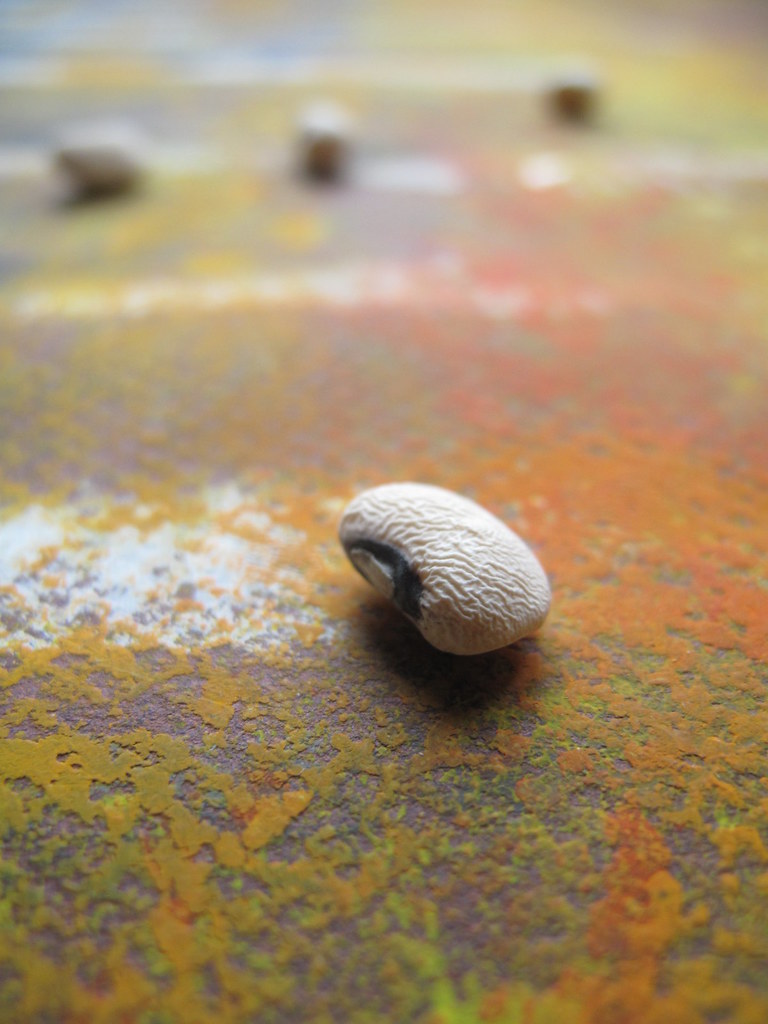
 Trickling tears
Rivulets of hope
Contour down bronzed cheeks
Though born free
In time, shackled
Dying…to be free
And in that moment,
And in that day
You grip on to something,
You won’t let it go
Trickling tears
Rivulets of hope
Contour down bronzed cheeks
Though born free
In time, shackled
Dying…to be free
And in that moment,
And in that day
You grip on to something,
You won’t let it go
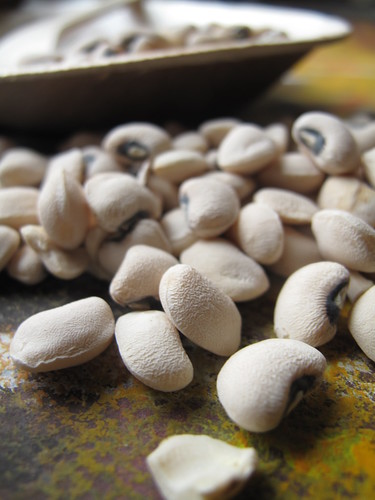
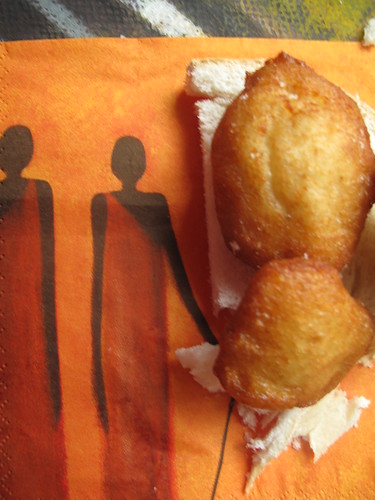 This, this beanball
This fritter…
Is a piece of home
And in that moment,
You triumph
Over all evil.
You succeed…
In being free
This, this beanball
This fritter…
Is a piece of home
And in that moment,
You triumph
Over all evil.
You succeed…
In being free
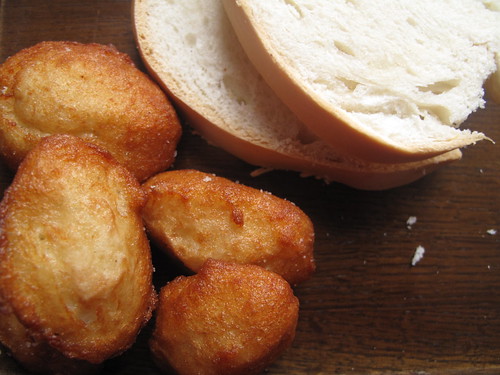 Warm memories of your mother
Shouting you awake to school
Tussles with your brother,
Rolling about on the sand
Steam, sweat, heat
Joy, warmth, peace
And the torment and sorrow
Pass away
Temporarily abated
Held back
Staved off….till another day
Warm memories of your mother
Shouting you awake to school
Tussles with your brother,
Rolling about on the sand
Steam, sweat, heat
Joy, warmth, peace
And the torment and sorrow
Pass away
Temporarily abated
Held back
Staved off….till another day
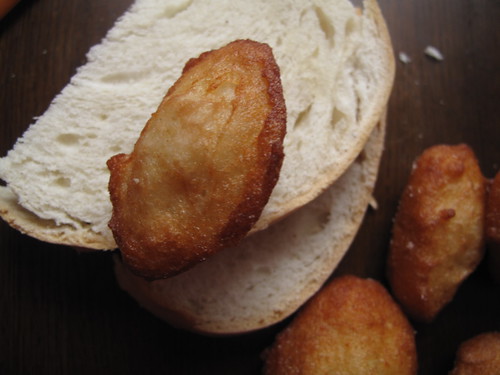 And in that hour
Again in that moment
When the first taste of Acaraje touches your lips….
Strength and salvation arrive
And victory over bondage is declared……
Come and eat Akara – ‘Acaraje’!
And in that hour
Again in that moment
When the first taste of Acaraje touches your lips….
Strength and salvation arrive
And victory over bondage is declared……
Come and eat Akara – ‘Acaraje’!

We all sat down in an Indonesian restaurant. By some stroke of fate, I sat next to D, who is Brazilian….and as conversations pretty much around me at one point or the other end in food….., we happened upon the topic of ‘foods from home’. One mention of ‘Acaraje’ and a description followed.
I was shocked. That was ‘Akara’….hands down, and I said as much.
He said the African slaves brought it to Brazil and that it was especially popular in the Bahia region. Though he said African, I knew the slaves had to be Nigerian. For these the name bore a striking resemblance to our Nigerian bean cakes!
Months later, I was still pondering…..on the name, and on the captivity of souls….but also the freedom – to yield something of their own, even when captive. The power to create and change a national cuisine….spells for me abundant hope. And that’s what Acaraje has become in Brazil. Read on.
I read that in Nigeria, when Akara is sold on the roadsides, the women who sell it call out ‘Akara je’, which means ‘Come and eat Akara’ in Yoruba. As I have never heard the sales cry, I am left wondering how true it is. Though it is not hard to imagine that when they (the slaves) came over to Brazil they chanted the same chants and so people assumed that what they were selling was called Acaraje. And so…the name was born and remains today….but only in Brazil!
In support, Niyi Afolabi writes in an online article titled ‘The Land of Orixas: Reflections of a Yoruba in Brazil’ – ‘What is interesting here is the corruption of the noun “Akara” (the bean cake) and the verb ‘Je” (which means “to eat”). One can only come to the conclusion that through many years of enslaved Africans offering “Akara” to each other as a gesture of invitation (“Would you like to eat ‘Akara’?”) the two words are now totally corrupted and integrated into one noun as known today: Acaraje’ in Bahia today’.
But Femuwe comments on the article saying ‘The etymology “akara to eat” (which would have to be from “akara jije”) is often claimed (for acaraje) but it is unlikely. Semantically, what other kind of akara exist –“akara mimu” (“akara to drink”)? Similarly no one goes around hawking “bata wiwo.” (“shoes to wear”) because it is the only conceivable use. But on a recent visit to Salvador, Bahia, an eminent colleague reminded me that akara has many regional styles of confection, such as those of Ogbomo.s.o.(a Nigerian city), etc., so it’s reasonable to think that the Brazilians have taken one specific type to stand for the whole, maybe because they regarded that one as more delicious, or perhaps it was simply the one their population was most familiar with.
This is along the lines of what Shola, a visitor to my blog said ‘Actually the acaje (sic) is a type of akara from the western part of nigeria and its called akara ijesha there are different types of akara in nigeria and the one thats is made in brasil in actually the akara ijesha type’.
Note that Ijesha is a part of Nigeria where they make akara but fry it in palm oil, in the manner they do in Bahia.
Regardless of the source of the name, Acaraje/Akara is delicious and in 2004, Acaraje was declared part of Brazil’s heritage culture in the region of Bahia, a bit like Feta to the Greeks and Cypriots!
According to ‘Flavours of Brazil’:
Brazil has a national institute called the Institute of National Historic and Artistic Patrimony (Instituto do Patrimônio Histórico e Artístico Nacional), commonly known in Portuguese as IPHAN, which has been charged with selecting the best of Brazil’s historic, cultural and artistic treasures.
What is most interesting is that IPHAN has been charged not only with selecting paintings, buildings, palaces and churches, it has been charged with selecting those immaterial treasures that are central to the conception of Brazilian culture. This list of immaterial national treasures includes food and cooking, and though I am not sure if Brazil is the only country to so classify foods and preparation techniques, I’m sure it is one of a very few.
It’s as if the USA declared that Kansas City Barbeque or Cajun Jambalaya were national treasures, worthy of inclusion in the Smithsonian Institute, or if Canada bestowed such an appellation on Quebec’s poutine.
In the certification of “Acarajé as Sold by Baianas“ as a national treasure, IPHAN included acarajé itself and the way it is prepared, the traditional clothing of the baianas, which is linked to the rituals of the Afro-Brazilian religion Candomblé, and the customary layout of accompaniments on the baianas‘ streetside tables, called tabuleiros.
Amazing.
Now, all the critical elements of Akara are the same as Acaraje: they are made of black-eyed beans, sold on the streets, mostly by women and are tasty.
One key difference between the Nigerian and Brazillian sellers is that of the ‘dress’: The baianas de acaraje – the women who sell Acaraje do their ‘jobs’ clad in ‘uniform’: white flowing dresses and colourful headscarves while in Nigeria, there is no such ceremony. The women wear whatever they have to hand, mostly with heads covered and that’s it.
In Nigeria, the sellers also set up shop by the road side, though they’re generally small outfits. Huge pans are filled with oil and heated and the madam scoops spoonfuls of batter into the hot oil, careful of splatters. She may have a companion who helps stir the batter, which is often in a large wooden mortar, with a pestle. The assistant may also be the one to dole out the bean cakes, wrapping them up in newspapers.
It is also a make-at-home recipe in Nigeria. In the past, this used to be more of my Saturday/Sunday morning brekkie, back at home. Now…things have changed, especially since I have to do most of it myself.
In Brazil it is always made with dende – reddish oil from the palm fruit. Now dende has a peculiar taste. In Nigeria, you’ll find it made with only palm oil, vegetable oil or a mixture of the two. Personally, I prefer the vegetable oil version, which may purely be because I’m used to it.
I was shocked to read the long list of things you could serve acaraje with in Brazil:
….the resulting acarajés are usually eaten accompanied by camarão (small sundried shrimp), pimenta (hot pepper sauce), vatapá (a paste made from sundried shrimp, peanuts, cashews, coconut milk, and dendé), caruru (kind of an okra stew), and salada (or salad, usually just diced tomatoes). These “fillers” can be included or left off at will, and the camarão will cost a little extra.
In Nigeria, none of the Brazilian accompaniments are served. On the contrary, it is sold/served with soft, white bread or Ogi (a pap made from fermented corn). The bread is called Ojile’ in the south – Warri specifically and Agege bread in Lagos and environs. The closest you get abroad is a brioche. Saying that, it doesn’t have eggs in it and therefore is white and not yellowish. Also, it isn’t as sweet as Brioche…but it has the characteristic softness and can be ‘torn’ with considerable ease!
Without further ado, I declare this my contribution to this week’s Culinary Tour 2010, hosted by Joan of Foodalogue.
According to the descriptions Joan gave about the type of dish being cooked, this is definitely Traditional Brazilian food!
- Traditional – recreate the country’s national dish or any other traditional dish.
- Contemporary – use a traditional recipe and make it Nuevo Latino (contemporize it).
- Algo Nuevo (something new) – create something totally ‘your own’ by using the flavors and techniques of the destination.
- Published Chef – follow the recipe of a published chef/author specializing in that cuisine.
Akara/Acaraje recipe
Ingredients 1 cup Black-eyed beans or Bean/Gram flour 1 small onion, peeled and chopped roughly 1/2 cup water (or more) Chopped chilli pepper, optional Salt, to taste Optional Chopped onions Dried shrimp Vegetable oil to deep fry Bread to serveHow to
Step one – sort the dried beans and remove/discard stones and any other bits and inedible bobs. Then what’s left is the raw material, the main ingredient for your fritters, right?
Well, depends on where you are. See when we moved to the Netherlands, I was desperate for some Akara and so I went out and bought some black-eyed beans. I soaked them overnight (which I wouldn’t normally do) and then tried to rub the skins off. Boy……..did I suffer. See, in Europe, the beans are usually polished and cleaned and God know’s what and so the skins adhere to the pods and want to remain forever cleaved. Eventually, I succeeded but it almost swore me off my beloved dish.
As with all expats, after a while you settle down and you find out all the local places where you can find home foods…or burden family members with bringing some when they visit – in exchange for a bed to lay their heads and food……and this is not to discourage you from trying to make it, either.
Alternatively, you can use bean flour or gram flour – see my recipe on food52.
Rinse the beans under running water and then soak them in a large bowl of water, (to cover them) for a few hours. In Nigeria, people don’t like soaking them for longer than 2-3 hours because they say the beans over-absorb water and become tasteless.
After soaking them, rub them together between your hands (making circular motions), to remove the skins. (In Nigeria, we would strain the soaking water away and then put in our rather large mortars and then crush them with a pestle to accelerate the skin removal).
To get rid of the skins, fill the mixture with water and drain the skins and other debris in a colander. You will have to do this several times. When I rinse the mix, I have two bowls and a colander: one bowl has the beans mix and the other collects the water I drain off through the colander. I put water in the bowl, swirl it around, tip it out, through the colander into the other bowl and then repeat till the beans are almost clean.
In a blender or food processor, grind the beans with the onions, water and chilli peppers till a smooth, thick paste (like porridge) forms. You may need to stir the mixture around and pulse till you get a smooth paste.
Some people allow the batter to stand for a few hours (or stay overnight in the refrigerator) because it improves the flavor. As for me and my house……we fry it straight away, though I often have leftovers in the fridge for the morning after. Alternatively, you can freeze it for at least a month then when ready to use, defrost in the refrigerator overnight.
When ready to fry, heat about 3 – 4cms of oil in a deep frying pan, wok or skillet. Stir the batter with a whisk or wooden spoon and season to taste with salt. I always make sure I taste this to ensure I can taste the salt. If I can’t, then the resulting fritters will be a bit tasteless. At the same time, I watch the balance cause oversalty….not nice!
Also, I don’t fry up the whole batch at once, I always season and fry the portion we need and keep the rest covered and refrigerated.
Some people add dried crayfish, stockcubes, dried chilli pepper…..it all depends on you. I add some chopped yellow peppers….hot and sweet!
I usually put some slices of onions in the oil and as soon as it starts frying, I know the oil is ready – a bit like the cube of bread test!
Using a teaspoon, tablespoon, ice cream scoop, take up some batter and gently lower into the hot oil. Repeat this with the other fritters, filling but not over-crowding the pan.
Deep fry the Akara balls until the under side is brown, then flip over and fry the other side.
Remove with a slotted spoon and serve….with bread and a cup of milky tea. Or with oats……
I love the fact that they end up with little crunch edges and corners and sometimes with tasty, crisp pendants.
One bite and the soft, creaminess of the bean-flavoured insides and I’m transported in time….to another place….home. The flavour of the beans is unmistakable and surprisingly, you don’t need much more than salt to elevate it to a fab snack.
And this time when I thought about just serving it the way we do at home – just with bread, sometimes buttered…it seemed so simple. I was actually shocked.
I hope you’ve enjoyed this. Please join us next week as we head to Colombia. At this point, I am (seriously) still thinking of what to make………..but have no fear, the goods will be delivered!
- January 11, Mexico: I missed it! – I am planning a make-up session though!
- January 18, El Salvador: Platanos fritos tortillas – Breakfast/Main
- January 25, Nicaragua: Horchata, a type of…. – Drink
- February 1, Argentina: Empanadas – Snack
- February 8, Brazil: Acaraje – Snack/Main – this post
- February 15, Colombia: not yet decided, but will…..
- February 22, Jamaica: Jerk Fish with creole sauce – Main
- March 1, Haiti: not yet decided
- March 8, Cuba: Cuban strawberries with Meringue (ice cream) – Dessert
- March 15, Puerto Rico: not yet decided
Take care!



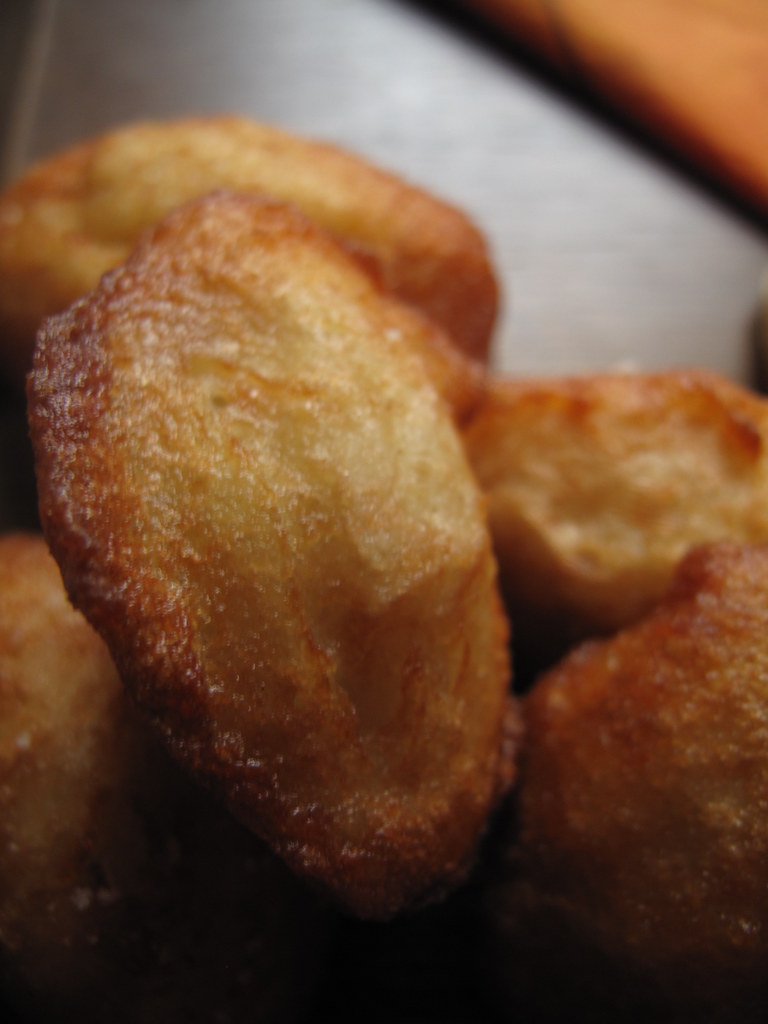
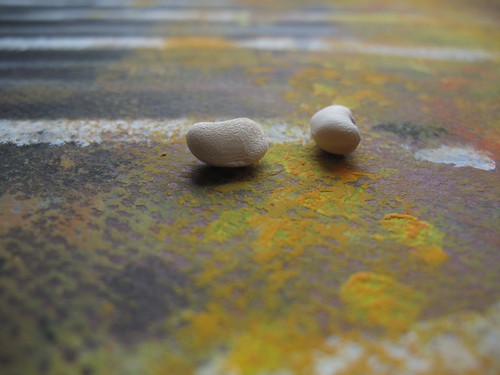


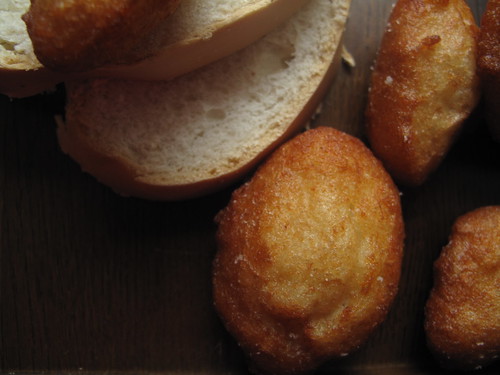
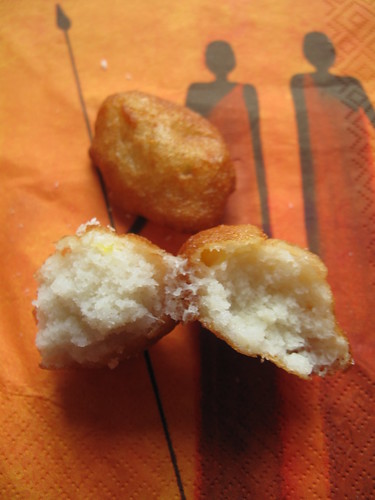

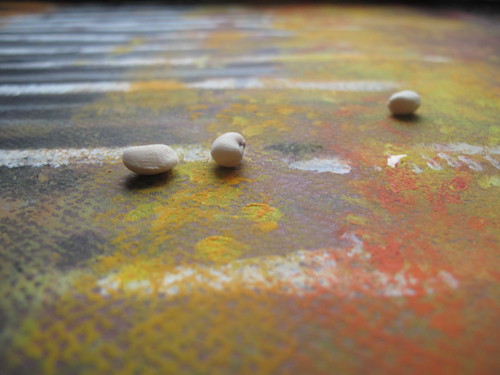
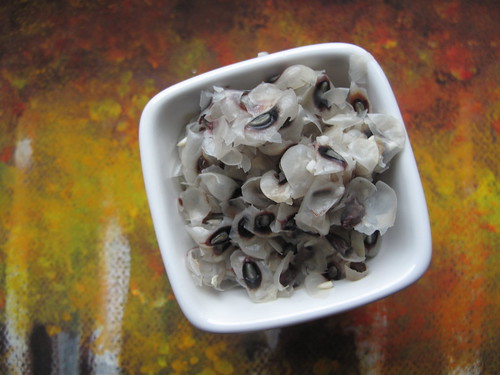
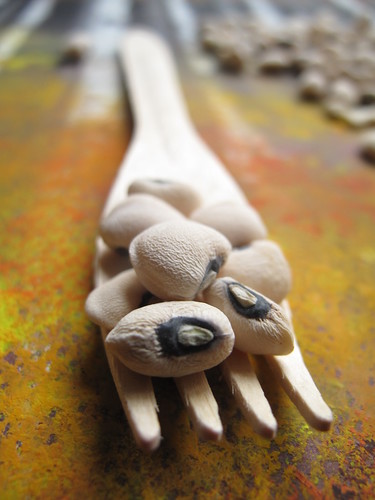
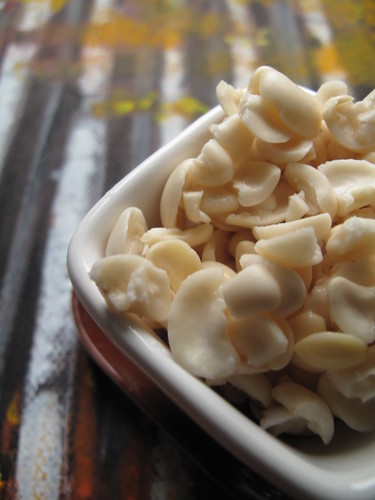


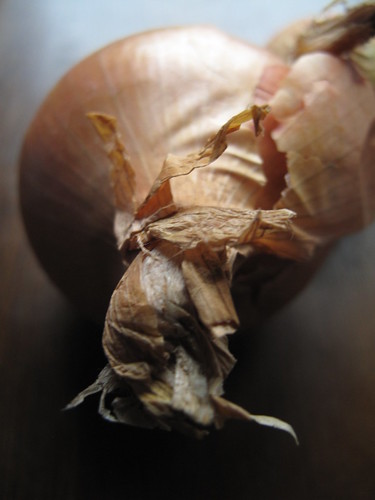

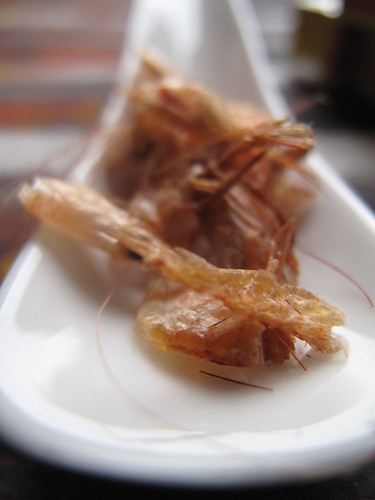
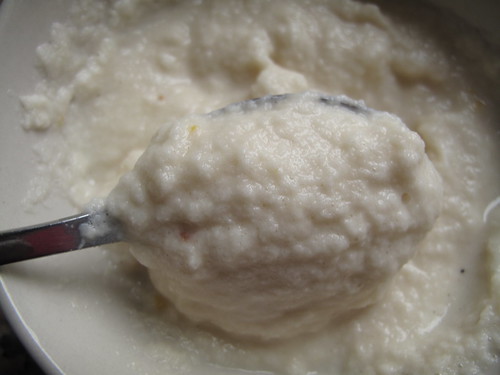
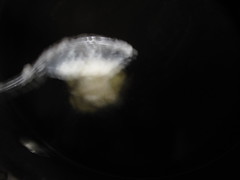
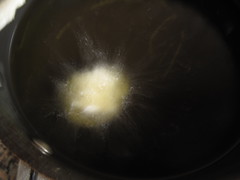
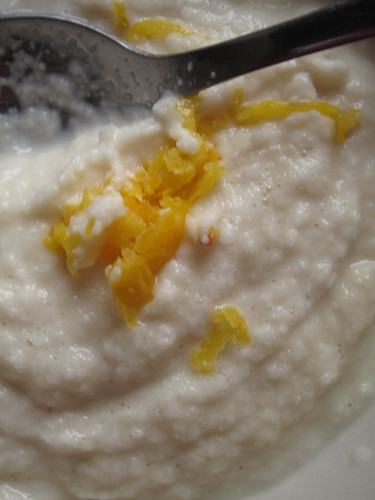
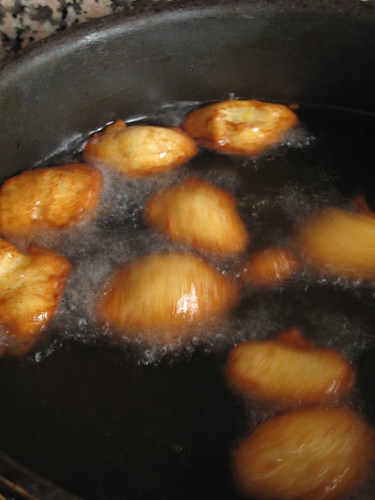
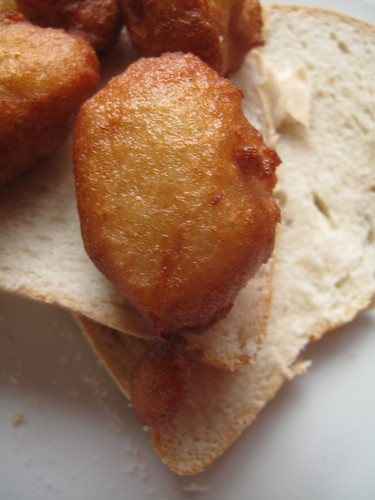
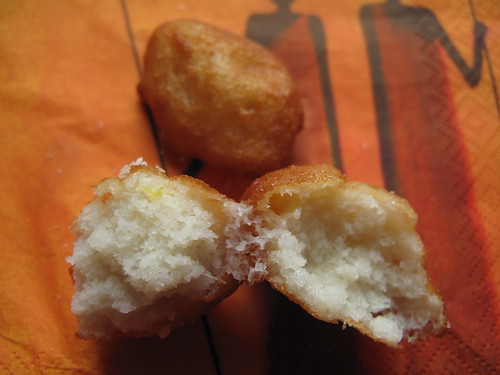
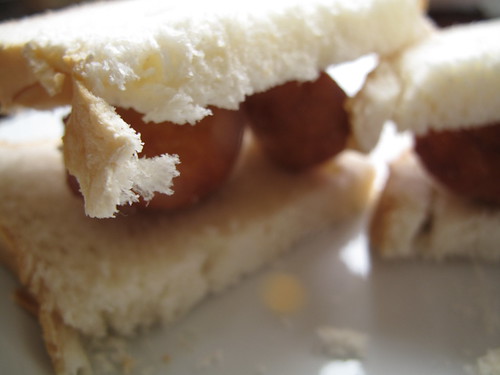

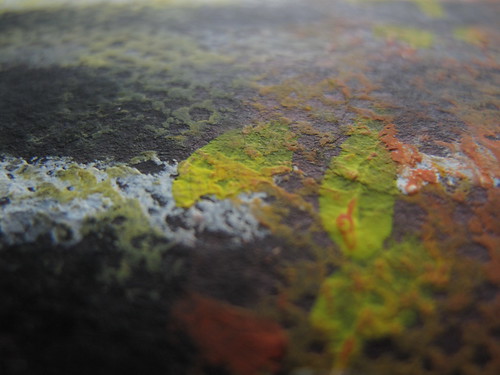


[…] (akwa) ‘saltfish fritter’ (Yoruba, as in the Brazilian acarajé) belair (bèlè) ‘a folk dance’ (possibly Koongo) bobolee (boboli) ‘stupid […]
[…] There’s a lot of similarities between the flavor profile of the African foods that I’ve tasted and the Haitian foods I grew up eating. Specifically, we have a dish in Haiti called Accra/Akra, made with ground black-eyed peas or sometimes malanga, which may have originated in Nigeria where it goes by the name of Akara. This dish then traveled to Brazil as a result of the slave trade, there a variation can be found under the name of Acarajé. […]
[…] via Kitchen Butterfly. Check out some of her delicious Nigerian […]
[…] and love for football. Connected in cuisine. Some of which I’ve explored before, from Bean Fritters to Plantain […]
[…] An even bigger shock. I’ve written about the food bridge between Brazil and Nigeria, with the ‘export’ of Akara but what I hadn’t discovered was the ‘return’, the importing of Brazilian ingredients and […]
[…] An even bigger shock. I’ve written about the food bridge between Brazil and Nigeria, with the ‘export’ of Akara but what I hadn’t discovered was the ‘return’, the importing of Brazilian ingredients and […]
[…] of them. This recipe was spot on. Spot on in uniting Nigerian cuisine with South American. Again. And again. And […]
[…] There’s a lot of similarities between the flavor profile of the African foods that I’ve tasted and the Haitian foods I grew up eating. Specifically, we have a dish in Haiti called Accra/Akra, made with ground black-eyed peas or sometimes malanga, which may have originated in Nigeria where it goes by the name of Akara. This dish then traveled to Brazil as a result of the slave trade, there a variation can be found under the name of Acarajé. […]
my my oh my you’re one beautiful photographer :). Can we please talk, we share the same Nigerian food dream. KUDOS
We have it in Ghana too but pronounce it ‘akala’. At times, eggs are whipped and added to the mixture before frying. As to whether to eat with bread is a matter of choice in Ghana because it is usually with porridge (millet or corn dough). It’s very yummy with the eggs too. You should try it one of these days. Thanks for the post and I enjoyed the piece about Ghanaian foods too. Good work!!!!!
Thanks Akosua. We have the same versions here too – sometimes with eggs in, and sometimes accompanying akamu/ogi (a pap of corn starch).
I appreciate the support. Stay well.
Hi just spoke with my aunt to tell her the reciepe she gave me for making steamed akara was delicious (this was before I discovered your site!)! I didn’t know it is called akara when I mentioned how similar it is to the brazilian version acaraje. Then my aunt informed me we call in akara in Ghana- a Hausa dish.
In Ghana we eat acara for breakfast with Hausa coco (porradige).
My journey in Brazil has been one of astonishment espcially being a decendant of Afro-Brazilian returnees… Therefore tracing further back my real ancestry lies in Nigeria!
I love your delicate pictures and words! It’s a shame for some reason I am only viewing half the size on my screen. Will be back again to take a better look when it fits my full screen.
I blog about my travel journey
http://www.travelmakerkai.com
Thanks
Kai
Thanks Kai for your wonderful comments. Steamed akara sounds like Moinmoin. Whatever, I love the connections food brings about! I’ve been to your blog and your travelogues are fantastic too! I so want to go to Togo. Wonderful stuff! Stay well.
[…] Do you see the connections? I do! Wow!, that makes a lot of sense. For example there is Akara or Acaraje, a Nigerian dish the Brazilians took back to their kitchens. On the flip side here is Imoyo, […]
[…] even bigger shock. I’ve written about the food bridge between Brazil and Nigeria, with the ‘export’ of Akara but what I hadn’t discovered was the ‘return’, the importing of Brazilian ingredients and […]
[…] in the manner of ukwaka, steamed plantain pudding yet made with the same base ingredients as akara, bean fritters. Delicious and a very fine companion for my gari. […]
[…] afraid I just can’t eat acarajé as the dendê oil makes me ill, and besides, others have written about it far better than I ever could). But everywhere – or at least, everywhere I’ve […]
[…] backgrounds can be done in a variety of ways. Everything from paper to fabric is fair game. Did I mention wood? Today, my focus is on creating coloured backdrops from […]
Actually the acaje is a type of akara from the western part of nigeria and its called akara ijesha there are different types of akara in nigeria and the one thats is made in brasil in actually the akara ijesha type
I have very close friends from Nigeria and they make “Obokoru”. It is actually akara with the skins of the the black-eye pea left on. It’s the same recipe, just dont rub off the skins and it creates a whole different texture and flavor.
[…] links between Brazilian acarajé and a Nigerian fritter called “akara”. Click here to read the post – and enjoy the marvelous photos […]
[…] Some describe them as a ‘fun loving people’ on the coast of West Africa. While the majority of the Yoruba live in western Nigeria, there are also substantial indigenous Yoruba communities in South American countries like Brazil (remember Akara-Acaraje), Cuba, Haiti, Puerto Rico, and many Carribean countries, as a result of the slave trade. I suspect, that somewhere, sometime ago, in that time, recipes followed captured Nigerians across borders and lands……into South America. Remember Akara-Acaraje? […]
[…] are also popular vehicles for Moi-moi – a steamed bean pudding, made from the same ingredients as Akara, but then steamed instead of […]
[…] also popular vehicles for Moi-moi – a steamed bean pudding, made from the same ingredients as Akara, but then steamed instead of […]
Akara or accra also has a Caribbean connection too. However it is made with flour, salted cod and spices. I was very excited to see that it was originally made with bean flour and MUST try it to see what the original tastes like. Superb post.
Your pictures are INCREDIBLY beautiful. What is the multicolor background you used for the macros? In one of the shots is almost looks like a piece zinc sheeting.
Brava!
Daaaaaaaaaaaahling, hubby was sitting with me when i was looking at your blog. He said hmmmm, that looks nice. So guess what? You have officially been awarded the Mr P stamp of approval. Congrats! These aren’t easy to come back.
Happy Valentines day to you and your family.
*kisses* HH
What a fabulous post. I really enjoyed reading this. It’s amazing how food travels and how many similarites there are. A close friend of mine is Brazilian and one day we discovered that both our countries had a very similar/ almost identical peanut snack – maybe thanks to the Portuguese who played a part in our (Malaysia’s) history.
These bean fritter sound so tasty, I love deep fried goodies 🙂
Wonderful, and very interesting article. The bean photos are some of the most beautiful I’ve ever seen. Very inspired.
[…] us next week as we head to Brazil and I bring you Acaraje/Akara aka bean fritters, a recipe taken from Nigeria to Brazil by the […]
Wonderful post! I learned so much. These little fried gems look delicious.
Thanks Barbara
That’s so interesting – I love stories like this that combine history, food culture and language. I’m also fascinated by how words get transplanted from one language to another with small tweaks (for example, the Afrikaans word for kitchen is totally different to the Dutch word for kitchen – because Afrikaans uses the word for a ship’s galley “kombuis”. This is because the galleys on the ships that brought the first Dutch settlers to the Cape were the first Western kitchens in the colony and the name stuck, even after they built kitchens on land. I love it! the bean fritters loom tremendous and I love those orange napkins too.
Wow…….experiences shape our histories….and our futures!
Ugh those are such a pain in the @$$ to make especially the peeling, in cuban cooking we call it “Bollitos de Carita” which my grandmother seasons with garlic mashed to a paste and minced parsley (I prefer cilantro) but my grandmotehr just leaves the skin on now and grinds it like that, the peeling is just too much work.
The peeling is work….but this time, it took me a couple of minutes…. I loved the version with cilantro too! I must try it with garlic as well!
Fantastic stuff, Oz. So much history, so many stories. I love how the sales cry became the name of the bean cakes in Brazil!
Mimi, thanks
Lara….I’ve never had beans and bacon. We cook them as a side dish but…..with tomato sauce!
Taste of Beirut…..food does travel….and to me, it is a super expression of human resilience!!!
Velva – glad you enjoyed it
Celia – that was a great revelation to me – the transitions of the names!
What an amazing cultural and historical journey you have taken me on this evening. Wow!
Such a fascinating post! Your observations on how this dish traveled from Africa to Brazil reminded me of our own Lebanese (and Levantine) kibbeh and how it is considered a national dish in The Dominican Republic (due to the large number of lebanese immigrants there who brought it with them)
Wow so interesting. My dad is from Mississippi in the US so I grew up with black eyed peas, but always as a side dish cooked up with onions and bacon. The thought of a bread based on black eyed peas is very interesting. I would guess our beans are more similar to those in Europe though, hmm Ill have to think about how to proceed with this recipe…
Wondeful post. I love the poetry, history and the photos.
Mimi
[…] from Kitchen Butterfly enlightened and entertained with a historic narrative, poetry, the Nigerian link and a recipe for […]
Another glorious piece of work with authentic food, poetry, history, instruction and enticing food ‘porn’. I’m so glad you decided to join the tour.
Sarah…they are moreish – to me anyway, especially when I make small fritters….you know how mini things go!
Joan – thanks. This is one of the events that has let me do what I planned to this year (without a plan on how) – showcase food from my home! Thank you!
Absolutely fascinating post, I’ve learned so many new things here. They look delicious, I bet they are very more-ish. I like how you take the skins off them, never thought of doing that with pulses before.
Marvelous post Oz! I’m flattered by the quote from my blog and the link to it. And I’m humbled by this piece – now I’ve got something to aspire to in my postings. As they say here in Brazil – “parabens!”
Sophie, thanks
Zurin – I am amazed at the strength of the food connection and the longevity….
mademoiselle délicieuse – we learn everyday. Up till you commented and mentioned friands….I didn’t know they existed!
Jim..your blog gave me substance so…..thanks.
Most interesting use of black eyed beans. I’m used to seeing them in Chinese soups but never blitzed into a ‘flour’ anywhere before!
fantastic post Oz!!!! the history of food and culture goes back so far and involves so much emotion…wonderful! Now I know too how to remove skins from beans why didnt I ever think of it!!!:)))
Waw!! What a grand story on traditional foods!!
Your pictures look fab!! I haven’t eaten this dish before!
Oz, Oz, Oz. You’ve outdone yourself. You had me hooked with that first photo. Oh. My. Gosh. That’s gorgeous. Then the poem. Then the photos of the Akara on the napkin with the woman’s hand holding them. You’re a genius. (I have to ask about that first photo. What’s the background? I can’t take my eyes of those colors and textures!). Then as I read the recipe, I almost shouted out loud: HUSH PUPPIES! These are hush puppies made with bean flour instead of corn flour. A MAY ZING.
When I come to A’dam, can we make these too?
Kate dear. Yes when you come, we can make them – promise. You’ll have to do all the work though……
Thanks. The background is a painting my friend made, which hasn’t yet gone in a frame. I ♥ it too, though that wasn’t the original idea! I’m glad it worked out!
Great post and scrumptious looking akara. I haven’t seen this version before.
I noticed you mentioned Indonesian restaurant in the post. I am from Indonesia and curious about what items are popular in Holland. Would you mind sharing?
Tuty….Holland is big on Indonesian everything, though I suspect it is highly dutchified. You have the famous rijsttafel – a dutch invention which is a bit like the Middle Eastern Mezze with loads of different dishes on the table at the same time!
This is fascinating history and a neat culinary connection! And these fried treats are just scrumptious!
Krista – thanks
OysterCulture – I love food travel….and the discoveries! Glad you enjoyed it too.
Tangled Noodle – well said! well said. That’s the beauty of it!
Thanks Natasha
Between this post and that of Flavors of Brazil, I am so enlightened about this food that is entirely new to me. Poetic justice, I think, that a cultural aspect of those who were brought in slavery to a strange land has become an integral part of the history and very identity of that nation.
Many thanks for sharing such incredible information and experience!
I LOVED this post! What a terrific story and to me its one of the exciting things about food, how it travels from one culture to another, one continent to another and becomes something new and meaningful. That fact that its yummy, helps I’m sure.
Oh, Oz, I enjoyed this post SO much! I love the history, the poetry you interwove (and it IS poetry!), your remembrances. I love it all. 🙂
What a terrific herstory of a traditional food. Your research, photos and personal remembrances made it extraordinary. I have canned black-eye peas. Do you think that would work?
Claudia…..thanks. The canned peas won’t work…..cause they’re cooked. Sorry. You could also use yellow split lentils – i have tried them before and they work well